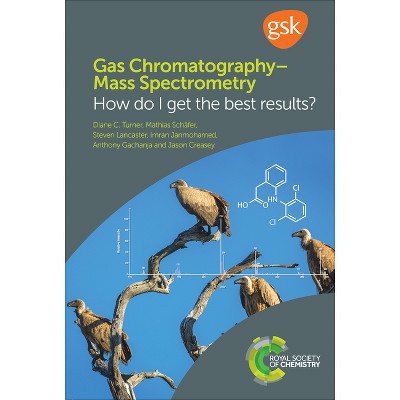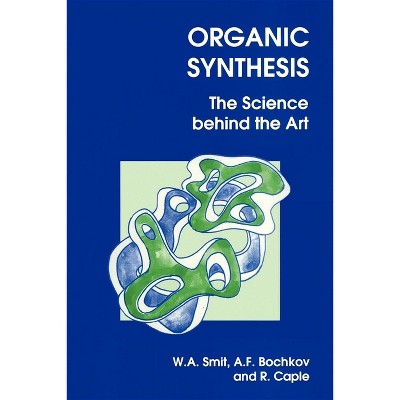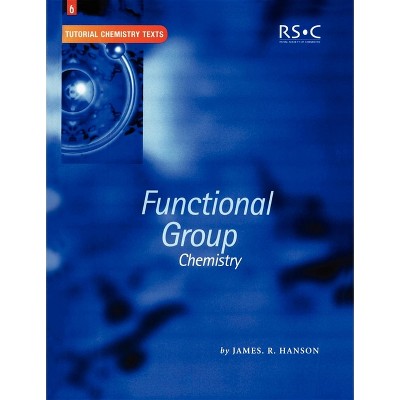From Enzyme Models to Model Enzymes - by Anthony J Kirby & Florian Hollfelder (Hardcover)

About this item
Highlights
- This introduction to the exciting area of artificial enzymes is suitable for students and more senior researchers.
- About the Author: Anthony J. Kirby is Professor (Emeritus) of Bioorganic Chemistry at the University of Cambridge.
- 273 Pages
- Science, Chemistry
Description
About the Book
This introduction to the exciting area of artificial enzymes is suitable for students and more senior researchers.
Book Synopsis
This introduction to the exciting area of artificial enzymes is suitable for students and more senior researchers.
From the Back Cover
Enzymes are the (impeccably green) catalysts that make the Chemistry of Life run smoothly and efficiently, and understanding how they work has been a major challenge for Biological Science for many years. Despite tremendous progress our understanding still fails the ultimate, practical test - of designing and making artificial systems with catalytic efficiencies to rival those of natural enzymes. "Artificial enzymes" has been a hot topic for many years, but until now no textbook has been devoted specifically to this subject. From Enzyme Models to Model Enzymes is the first to provide a critical introduction to, and overview of, this exciting area. It is aimed at both students and more senior researchers with interests in the field. The book starts with a systematic overview of the most important properties of natural enzymes, with special emphasis on mechanisms and catalytic efficiency. There follows a summary of the mechanisms involved in the major classes of reaction they catalyze, and of the logical progression from simple mechanistic models for particular reactions to the first, rudimentary model enzymes. Catalytic efficiency is the key criterion for inclusion. A careful analysis of the strengths and limitations of the classical design-based approach to catalysis by enzyme mimics leads on to a critical discussion of recent advances, which combine selection routines with iterative techniques for creating and improving catalysts by biomimetic methods. The meaningful comparison of natural and artificial catalysts requires a quantitative understanding based on the interpretation of kinetic measurements. Key skills in data interpretation are introduced in a guided approach that connects the formal treatment of kinetic measurements with their chemical and biological mechanistic interpretation. This book provides a convenient entry point into the chemistry for the biochemist and molecular biologist, and for the chemist an entrUe into the biological methods that are of rapidly growing importance in this and a number of other topical areas.Review Quotes
"Enzymes and how they work is a fascinating topic not only for chemists and biochemists, but for scientists in general, and the current importance of "green" and sustainable chemistry has not made the topic any less interesting.""...an excellent text for those who wish to enter or work in the field of enzyme mimicry.""Anthony Kirby is a first-rate expert in the area and, together with his younger colleagues, leads one through it with care and thoroughness."
"The organizational is logical, progressing from an introduction of the principles of catalysis through model systems to more sophisticated efforts that include biochemical methods to improve the catalytic function of proteins.""The coverage of topics is broad rather than deep, consistent with the authors' goal of introducing enzyme models to a wide readership.""Overall this is a valuable mongraph, particularly for those who are reasonably conversant with the underlying principles of catalysis. The text is very well written and the coverage of the topic is sufficient to give a broad overview of the field."
"Enzymes and how they work is a fascinating topic not only for chemists and biochemists, but for scientists in general, and the current importance of "green" and sustainable chemistry has not made the topic any less interesting.""...an excellent text for those who wish to enter or work in the field of enzyme mimicry.""Anthony Kirby is a first-rate expert in the area and, together with his younger colleagues, leads one through it with care and thoroughness."
-- "ChemBioChem, 2010, 11, 581 - 583""The organizational is logical, progressing from an introduction of the principles of catalysis through model systems to more sophisticated efforts that include biochemical methods to improve the catalytic function of proteins.""The coverage of topics is broad rather than deep, consistent with the authors' goal of introducing enzyme models to a wide readership.""Overall this is a valuable mongraph, particularly for those who are reasonably conversant with the underlying principles of catalysis. The text is very well written and the coverage of the topic is sufficient to give a broad overview of the field."
-- "JACS, 2010, 132, 3637-3638"About the Author
Anthony J. Kirby is Professor (Emeritus) of Bioorganic Chemistry at the University of Cambridge. He has over 40 years teaching and research experience in the area and has authored over 300 papers and 3 books. Florian Hollfelder has been lecturing in Biochemistry since 2001. He has a total of 15 years teaching and research experience at Cambridge, Stanford & Harvard and has authored more than 30 papers.
Shipping details
Return details
Trending Poetry











